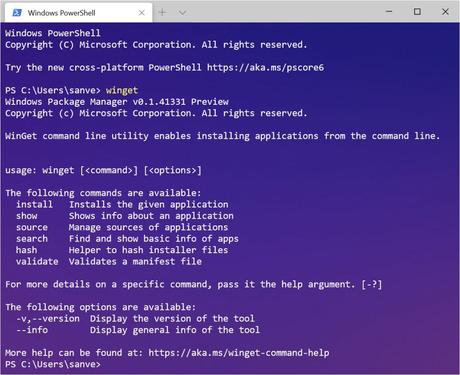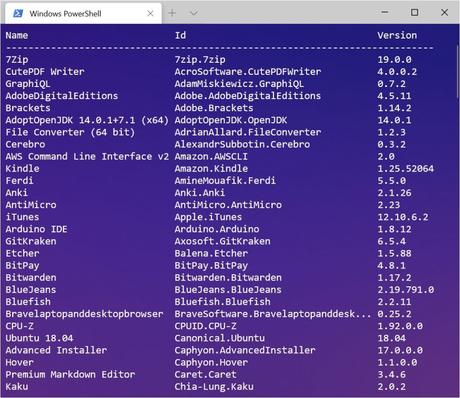It’s finally coming for everyone!
Microsoft has recently announced that they will be adding their own Windows Package Manager in upcoming builds of Windows 10, and it will go by name winget.
If you do not know what a package manager is, here’s a quick summary: A package manager allows users to install applications through commands, instead of having to use App Stores or to download installers from websites.
While not everyone is suited to using command line in real life for installing applications, it’s always nice to have options. And since you don’t have to browse through suspicious sites, it is way secure than downloading from online sources as well.
But how does winget perform? Is it any good? Why would you choose winget over Microsoft Store? I took it for a test drive and here’s what I think.
Table Of Contentshide- Installing the Windows Package Manager
- Packages Available To Install Using winget
- winget: Main Features of the Windows Package Manager
- What I would Like To See
Installing the Windows Package Manager
Installing the Windows Package Manager was easy. I headed straight to winget-cli github repository, which sent me to it’s installer download page. After many unsuccessful attempts of installation, I finally chose another route and looked into the latest winget-cli releases.
I then downloaded the winget-cli appbundle, which I installed using the App Manager in Windows. I restarted my Windows Terminal, et Viola! winget was available to use!

To save your time, just go to the latest releases page of winget-cli, and download a version that you want. Install it, restart any open terminals/shells, and you will be good to go.
If you want regular updates though, you will have install the latest Windows Insider build or sign up for the winget application specific insider program.
Packages Available To Install Using winget
Less than two days into its existence, the Windows Package Manager already has a total of 190 Microsoft and Third-Party packages available in its package repository.
If you are a developer, you can add your repository at https://github.com/microsoft/winget-pkgs.

Some of the notable third-party applications that have active package repositories, are WhatsApp for Windows, Steam, Kindle, iTunes, Discord, Dropbox and VLC Media Player. Zoom is also available, but there are reasons I would not recommend that. Read why here: Why is the Zoom App getting Banned everywhere?
winget: Main Features of the Windows Package Manager
Here’s a hand-picked list of features that sets winget apart from what we had in Windows 10 before. I have orchestrated these points considering we had options like chocolatey and Windows Store for installing applications on Windows.
- First Party Application: As winget comes from Microsoft itself, we can be sure that it will be better than any third-party package managers in terms of faster app updates, larger package repository and so on.
- Its just faster: As winget is written in C++ rather than slow PowerShell scripts, it will definitely be faster than Microsoft’s old package managers.
- Script Compatibility: As you can imagine, if you had a bunch of apps you wished to install on multiple Windows 10 Machines, you would have bad time doing it through Windows Store. Through winget, you can create a script and run it on multiple machines to install the same apps everywhere!
- Faster Distribution Source for developers: If users push towards using winget as their go-to method for installing apps, updating them would be no hassle as well. Developers can maintain their package repository for a faster distribution of updates.
You must also consider, that winget is only 2 days into its existence. Being open source, we are definitely going to see rapid developments in the near future. We actually might see it being available for everyone in the next fall update!
What I would Like To See
We all know for a fact that the Windows Store is due for an update. It’s basically non-existent for many Windows 10 users, especially developers, who prefer chocolatey instead.
But if Microsoft can pull off the perfect balance between CLI and Windows Store, I would love to use that. This way, power users will have what they desire: complete control, and novices won’t have to learn how to use CLI for installing applications.
As long as Microsoft tries to prevent users from searching on Web for installation packages, I am fine with their efforts. I feel that the Windows Package Manager is a step towards that, and I am more than delighted to hear the news.

